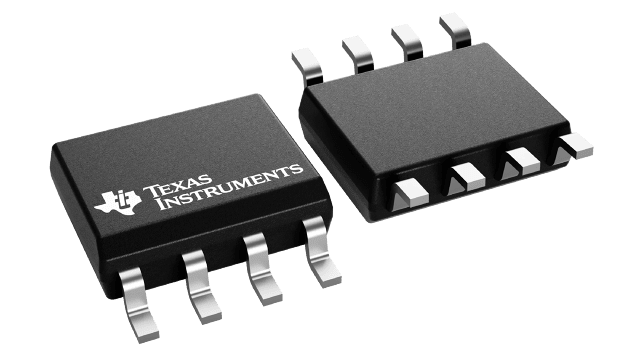
UCC3913D
ActiveFLOATING NEGATIVE HOT SWAP CONTROLLER WITH COMMERCIAL TEMP RANGE WITH CURRENT LIMITING
Deep-Dive with AI
Search across all available documentation for this part.

UCC3913D
ActiveFLOATING NEGATIVE HOT SWAP CONTROLLER WITH COMMERCIAL TEMP RANGE WITH CURRENT LIMITING
Deep-Dive with AI
Technical Specifications
Parameters and characteristics for this part
| Specification | UCC3913D |
|---|---|
| Applications | -48 V |
| Current - Supply | 1 mA |
| Features | UVLO, Auto Retry |
| Internal Switch(s) | False |
| Mounting Type | Surface Mount |
| Number of Channels | 1 |
| Operating Temperature [Max] | 70 °C |
| Operating Temperature [Min] | 0 °C |
| Package / Case | 8-SOIC |
| Package / Case [x] | 0.154 in |
| Package / Case [y] | 3.9 mm |
| Programmable Features | Fault Timeout, Circuit Breaker, Current Limit |
| Supplier Device Package | 8-SOIC |
| Type | Hot Swap Controller |
Pricing
Prices provided here are for design reference only. For realtime values and availability, please visit the distributors directly
| Distributor | Package | Quantity | $ | |
|---|---|---|---|---|
| Arrow | N/A | 1 | $ 0.64 | |
| Digikey | Tube | 1 | $ 5.10 | |
| 10 | $ 4.58 | |||
| 75 | $ 4.33 | |||
| 150 | $ 3.75 | |||
| 300 | $ 3.56 | |||
| 525 | $ 3.19 | |||
| 1050 | $ 2.69 | |||
| 2550 | $ 2.56 | |||
| Texas Instruments | TUBE | 1 | $ 4.04 | |
| 100 | $ 3.29 | |||
| 250 | $ 2.59 | |||
| 1000 | $ 2.19 | |||
Description
General part information
UCC3913 Series
The UCCx913 family of negative voltage circuit breakers provides complete power management, hot-swap, and fault handling capability. The device is referenced to the negative input voltage and is driven through an external resistor connected to ground, which is essentially a current drive as opposed to the traditional voltage drive. The on-board 10-V shunt regulator protects the device from excess voltage and serves as a reference for programming the maximum allowable output sourcing current during a fault. In the event of a constant fault, the internal timer limits the on-time from less than 0.1% to a maximum of 3%. The duty cycle modulates depending on the current into the PL pin, which is a function of the voltage across the FET, and limits average power dissipation in the FET. The fault level is fixed at 50 mV across the current-sense resistor to minimize total dropout. The fault current level is set with an external current sense resistor. The maximum allowable sourcing current is programmed with a voltage divider from VDD to generate a fixed voltage on the IMAX pin. The current level, when the output appears as a current source, is equal to VIMAX/RSENSE. If desired, a controlled current startup can be programmed with a capacitor on the IMAX pin.
When the output current is below the fault level, the output device is switched on. When the output current exceeds the fault level, but is less than the maximum sourcing level programmed by the IMAX pin, the output remains switched on, and the fault timer starts charging CT. Once CT charges to 2.5 V, the output device is turned off and performs a retry some time later. When the output current reaches the maximum sourcing current level, the output appears as a current source, limiting the output current to the set value defined by IMAX.
Other features of the UCCx913 family include undervoltage lockout, and 8-pin small outline (SOIC) and dual-in-line (DIP) packages.
Documents
Technical documentation and resources


